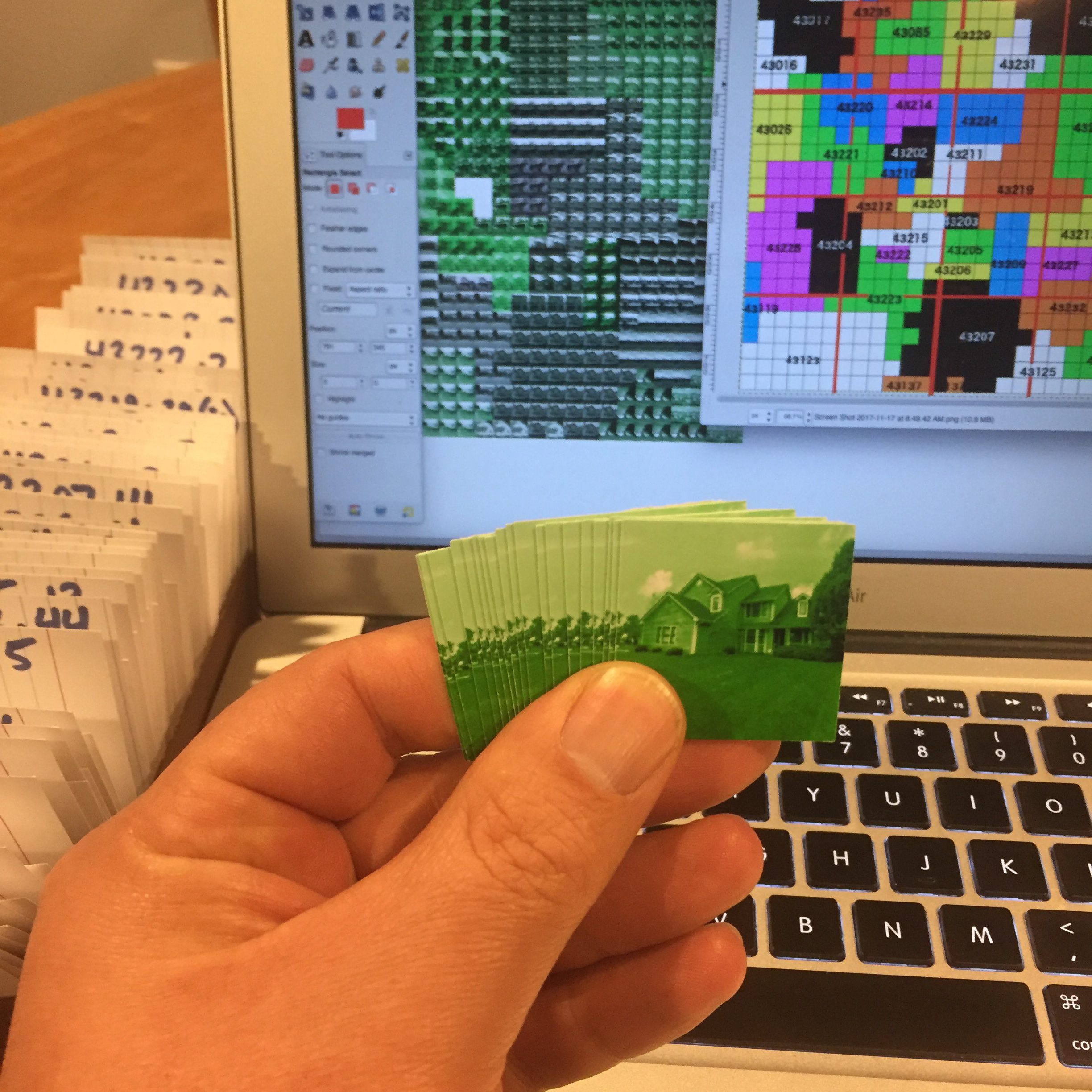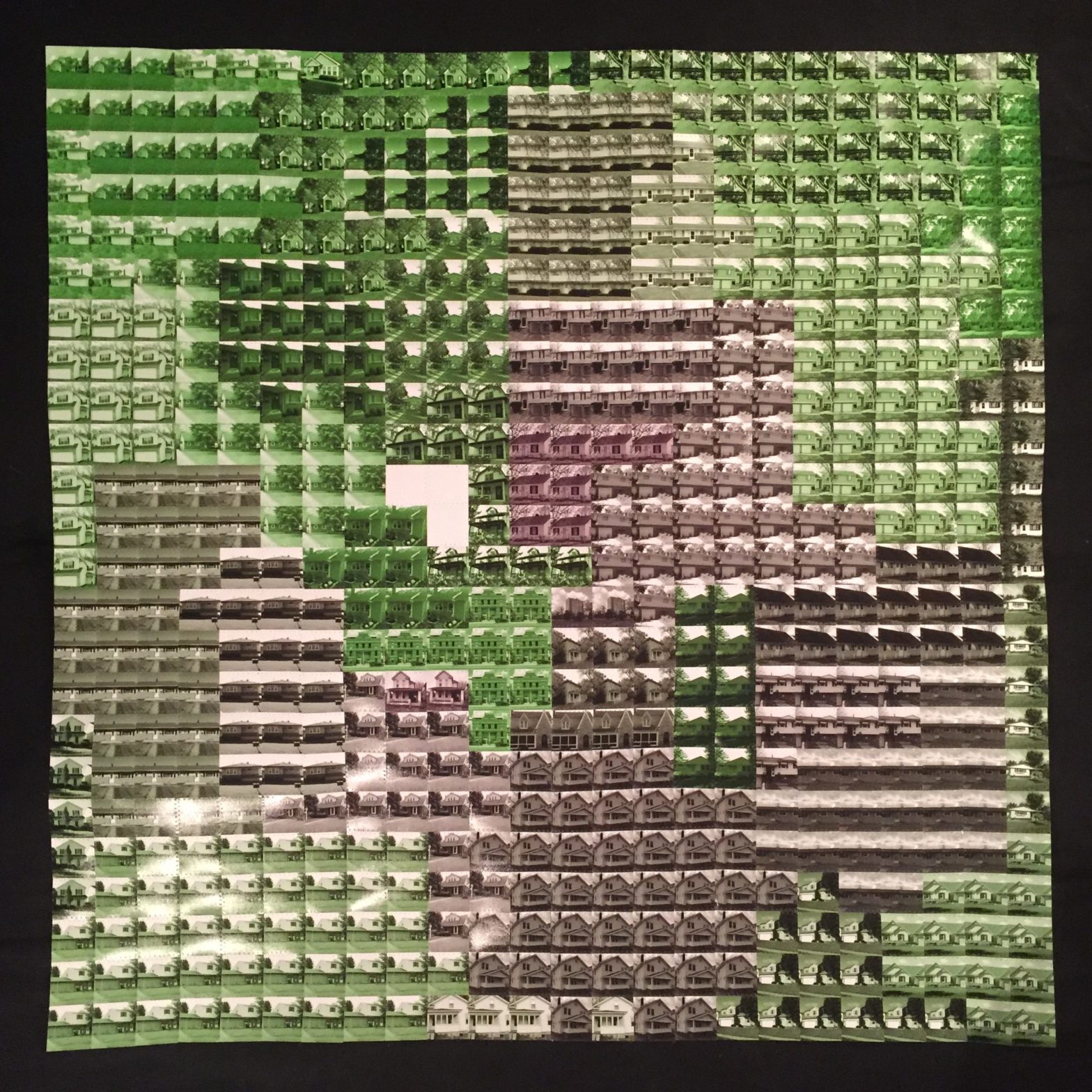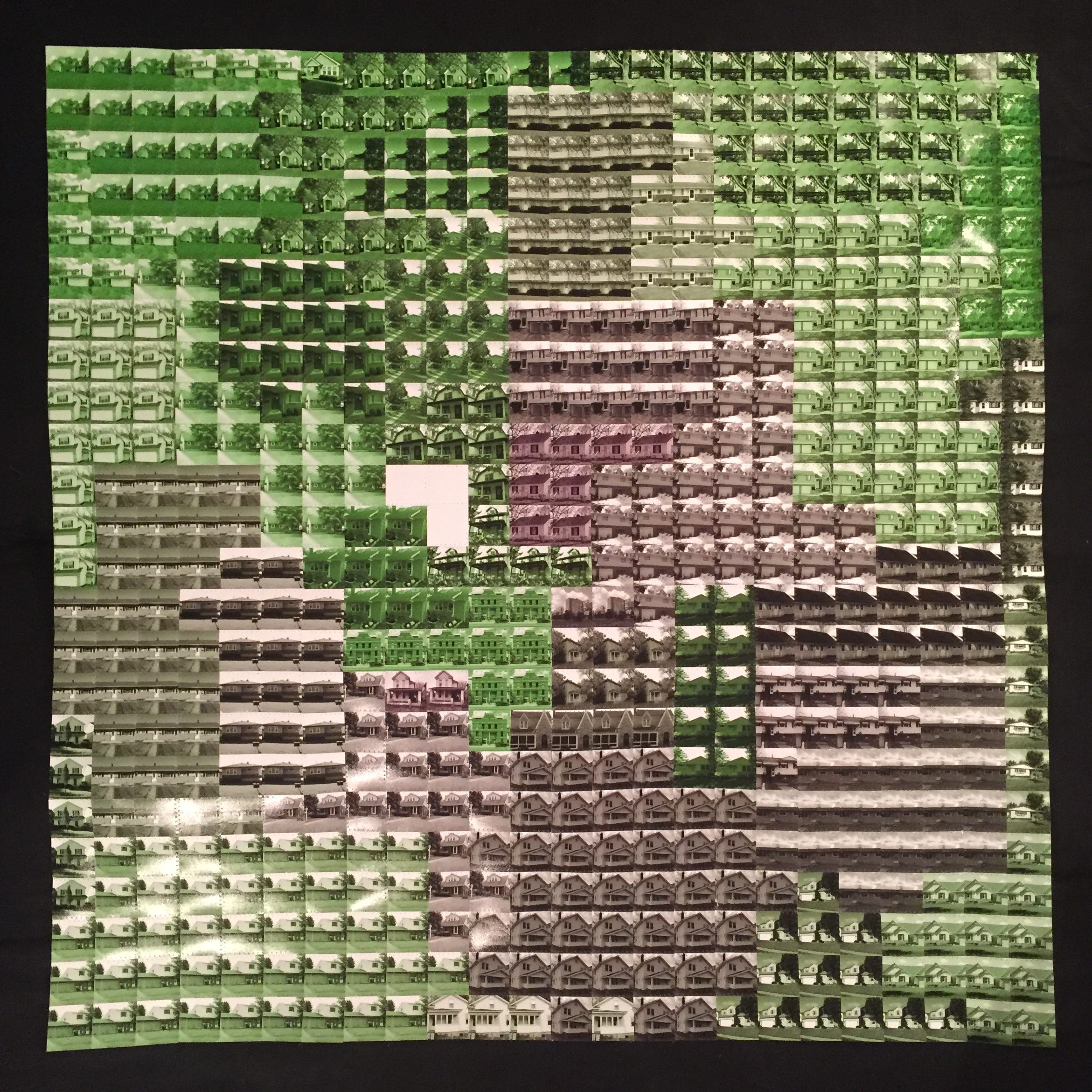34″ x 34″
2018
$300
This is the first in a series of maps of Columbus, Ohio that I am making by sewing photographs together. Each map will incorporate some set of data related to the city. This map features the median home value for each zip code from 2015 US census data.
Within each zip code, I have taken a picture of a house for sale at or near the median home value. The photo of the home with the highest value ($310,000) is tinted green while the photo of the home with the lowest value ($55,000) is not. I have then tinted each photo green proportionally to the values in between.
 Keeping 576 squares organized.
Keeping 576 squares organized.
Through color, a map of the city is formed. The northwest quadrant, much of which is not technically Columbus, includes suburbs (Upper Arlington, Dublin, Hilliard) with very high home values. This green area stretches down past the Ohio State campus (blank, because there are not homes for sale within the 43210 zip code) into downtown and German Village. Another suburb within the city, Bexley, is the green rectangle just southeast of center. Although I have left roads off the map, several are still easy to find. The most obvious to me is I-71, which runs north-south through the top of the map. To the west, median home values are quite high, while to the east they are much lower.
This map, and the data it depicts, is the result of several societal trends and civic decisions over the history of the city. This piece is also a reflection on my ability to create an objective record of that history. This map is a neutral artifact in the sense that it is a set of data that has been put through a algorithmic process. This is the result. On the other hand, it is impossible to design an algorithm without some cultural and personal bias. In this way, this photoquilt cannot be completely free of bias, much like the very map it depicts.
The process of converting the map to a grid was an interesting challenge. The short video below summarizes my process. Look for more data-driven photoquilt maps soon.

